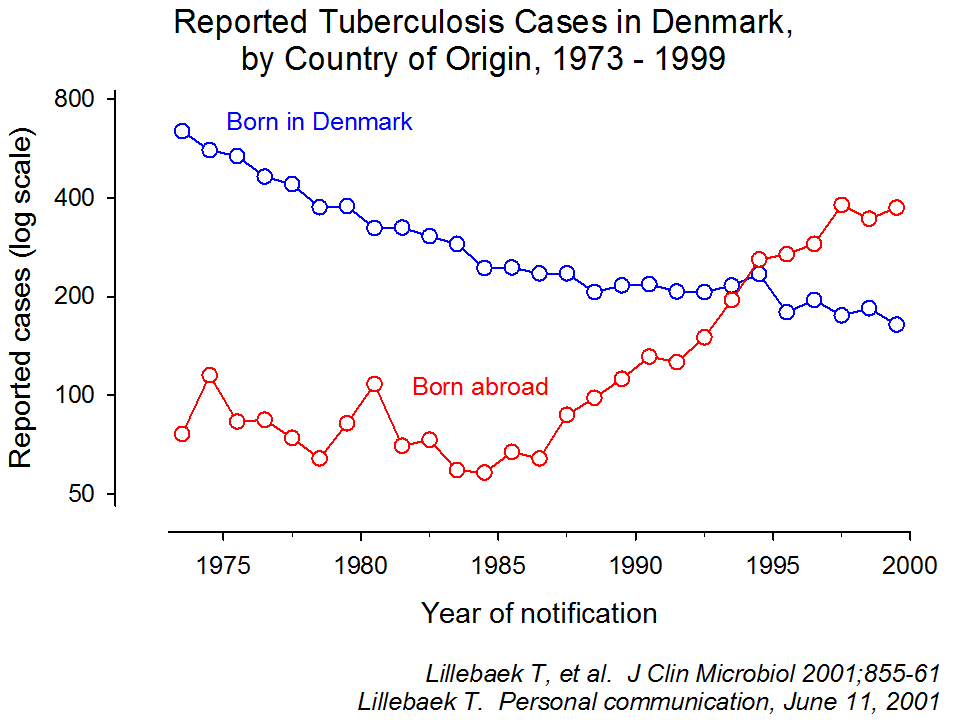 |
|
| |
|
|
| Slide |
099 |
Epidemiologic Basis of Tuberculosis Control |
 |
Next |
 |
 |
Previous |
 |
First |
 |
Last |
In industrialized countries where tuberculosis is receding in the indigenous population, an increasing proportion of all tuberculosis cases is reported among the foreign-born.
In Denmark, the number of reported cases among the Danish-born population continued to decline while the number of cases among the foreign-born increased. Denmark is just one among several countries where the proportion of tuberculosis cases among persons born in another country exceeds now 50%.
It may be noted that this influx of persons with an increased risk of developing tuberculosis in their new host countries has apparently very little effect on the trend in the indigenous population. This finds its explanation in the fact that transmission of M. tuberculosis requires prolonged contact with a source of infection. As people preferentially socialize within their own cultural context, it is not particularly surprising that the spill-over is of limited extent.
However, transmission between groups not closely socializing will nevertheless occur. This has been demonstrated in the Netherlands. Because tuberculosis cases in low-transmission countries are very frequently the result of reactivation of a tuberculous infection acquired long in the past, cases resulting from progression from recently acquired infection contribute a relatively small fraction. Among the latter, a sizeable proportion will be the result of transmission of M. tuberculosis from a close contact. Thus, the overall impact of transmission from foreign-born persons to morbidity in the indigenous population is expectedly small. |
| |
|
Go to top
Last update:
September 10, 2010